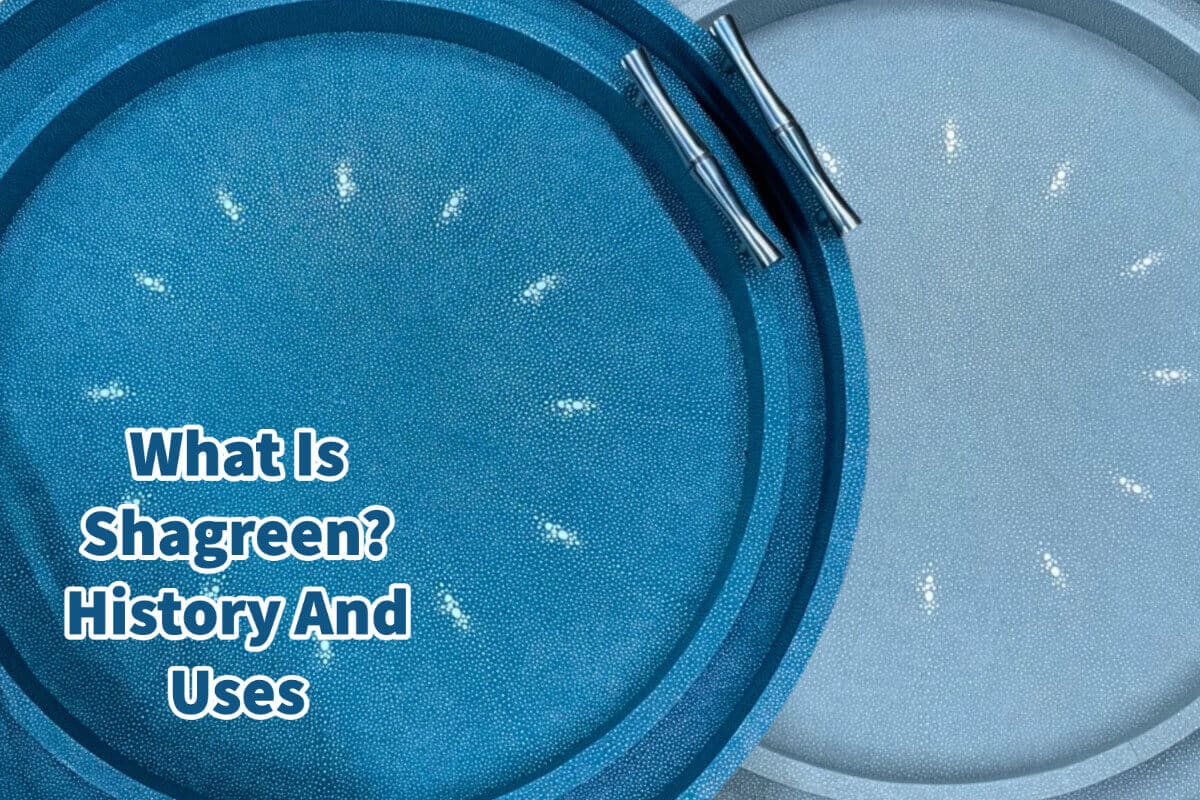Shagreen and the use of Shagreenin home decor is a look that continues to be very popular. Today many people still want the Shagreen look in their home decor and furniture designs.
Shagreen is a type of leather that has been around for centuries. It is known for its unique texture and has been used for various purposes throughout history. Shagreen has quite a unique history and is a type of animal still found. In this blog, we will explore if Shagreen is on the endangered species list and why many collections now use faux Shagreen as it can look like real Shagreen.
Table of Contents
- History Of The Shagreen Material Explored
- Where Is The Shagreen Animal Found?
- Is Shagreen On The Endangered Species List?
- Mondoro Can Produce Faux Shagreen
- How Shagreen Was Used Throughout History
- Frequently Asked Questions About Shagreen
- Related Content
History Of The Shagreen Material Explored
Shagreen was first used in the 17th century in France, where it was popular among the aristocracy. At that time, it covered sword handles and other decorative objects.
Shagreen was also used in Japan during the Edo period, where it was used to make sword sheaths and other decorative items. Shagreen was used because it is soft and known to work well for these handles and decorative objects.
The Word Shagreen Comes From A French Word
The word “shagreen” comes from the French word “chagrin,” which means “rough skin.” Shagreen is made from the skin of certain sharks and rays, which have a rough texture due to small, tooth-like scales called dermal denticles.
Shagreen texture is created by removing the scales from the skin and then polishing the skin to reveal the underlying texture.
Shagreen Was Popular During The Art Deco Period
Shagreen was popular during the Art Deco period in the 1920s and 1930s, and it was used to cover everything from furniture to jewelry boxes. Shagreen was also used during the 18th century to make small cases for scientific instruments such as microscopes and telescopes.
Shagreen Is Still Used Today
Shagreen is still used in the fashion industry, particularly for making shoes, bags, and other accessories. It is also used in the furniture industry for creating tables, chairs, and other decorative objects.
Many in the furniture industry will use faux Shagreen that can look and even feel like real Shagreen.
Where Is The Shagreen Animal Found?
The shagreen animal is found in various locations worldwide, including the waters of Indonesia, the Philippines, Thailand, and Malaysia. It is primarily found in the Indo-Pacific region, although it can also be found in the Atlantic Ocean.
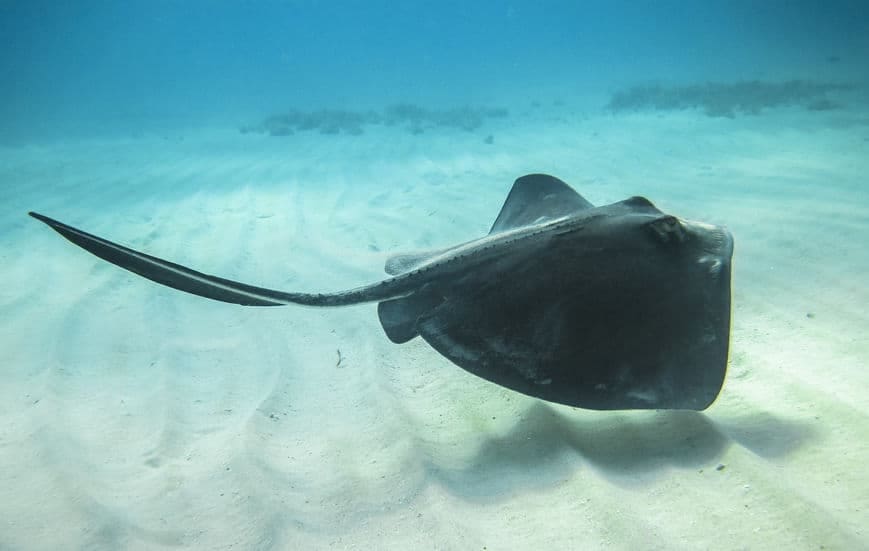
The shagreen animal is not a single species but rather a group of animals that have rough, textured skin.
Is Shagreen On The Endangered Species List?
The question that many people want to know is if Shagreen is found on the endangered species list. Some types of sharks and rays are on the endangered species list, but not all are used to make Shagreen.
However, making Shagreen can harm the environment, as the scales are removed from the skin and discarded, and the animal is killed for this purpose. As a result, some countries have restricted the use of real Shagreen.
Mondoro Can Produce Faux Shagreen
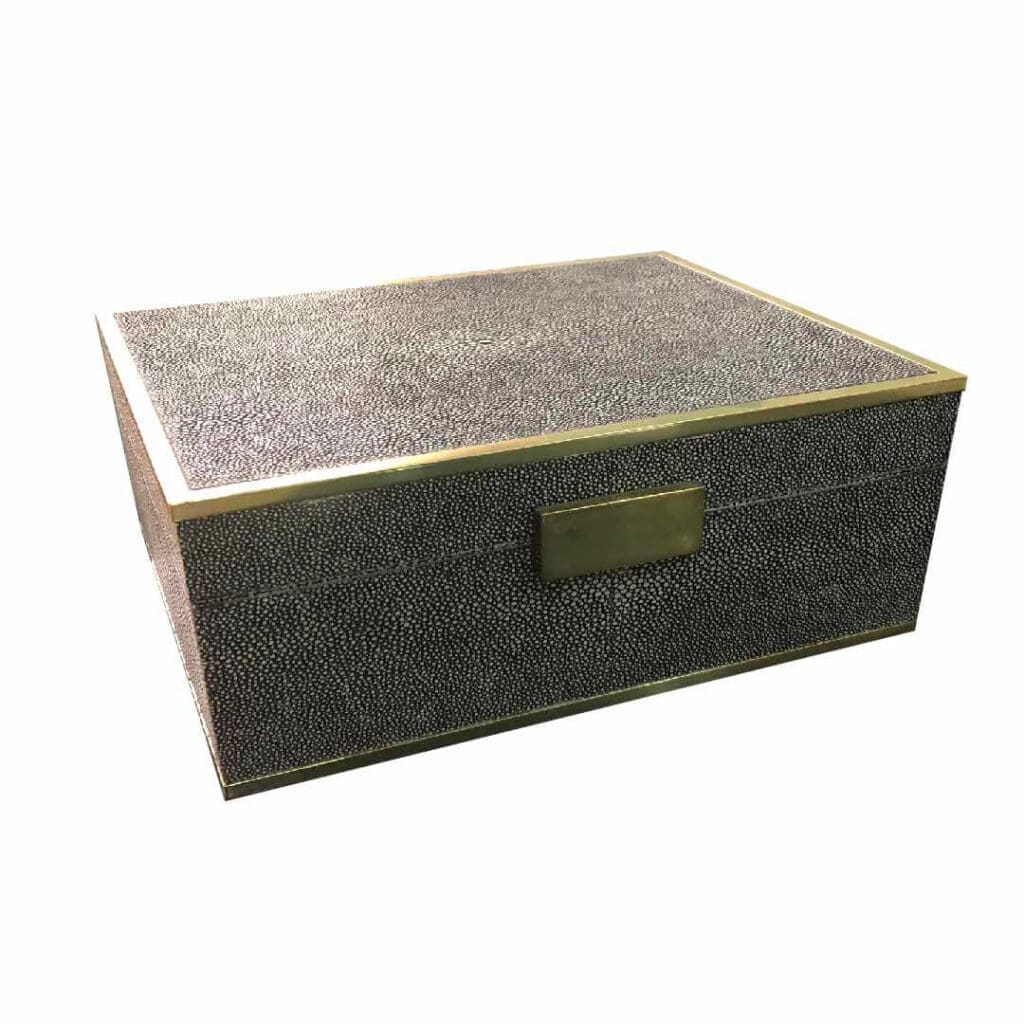
That is also why at Mondoro, we only produce Shagreen, which we call Faux Shagreen. The Shagreen we use is a rubber or molded copy of the real Shagreen and, when completed, can look and even feel similar to the real Shagreen.
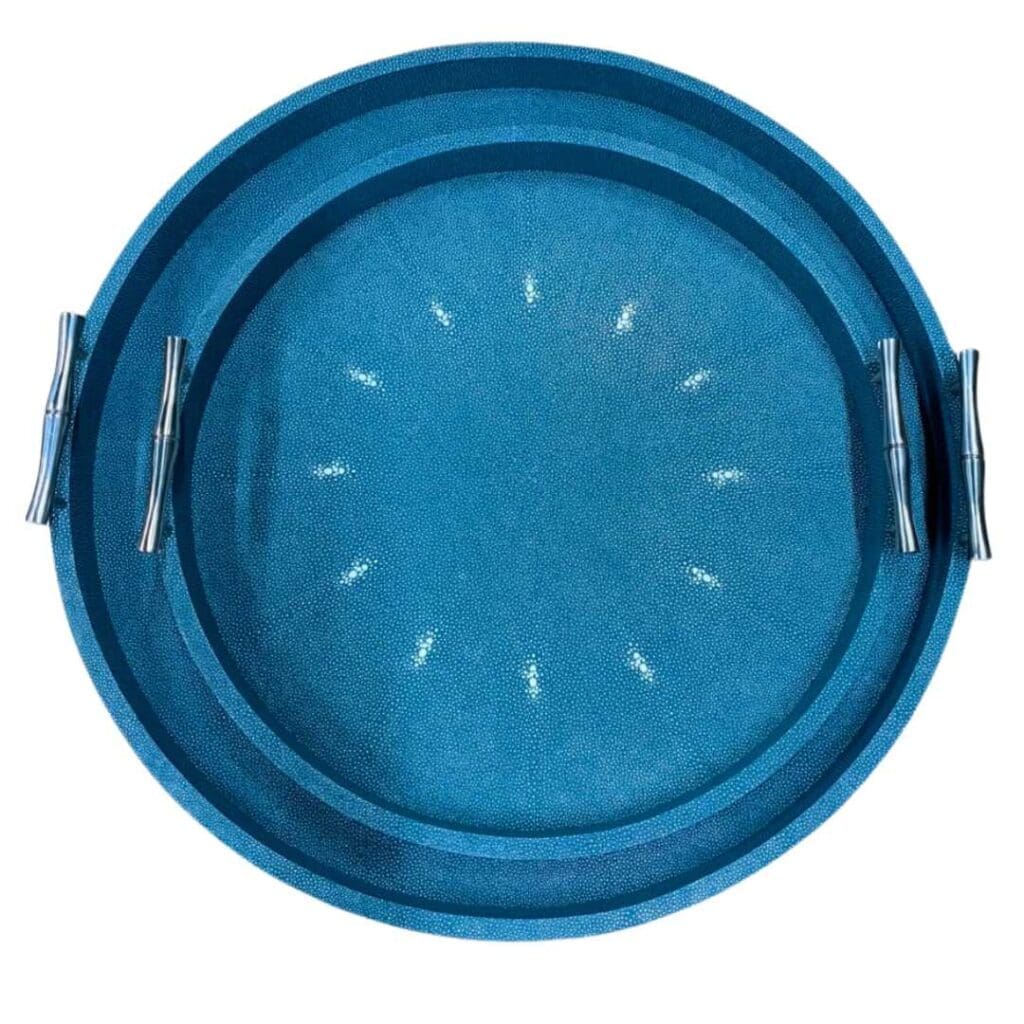
Faux Shagreen is made from materials such as resin, acrylic, and polyurethane, and it can be produced in various colors and textures. Faux Shagreen has become popular in recent years due to concerns about the sustainability of real Shagreen and the cost of real Shagreen.
Faux Shagreen has many advantages over real Shagreen, including lower cost, more color and texture options, and excellent durability. Faux Shagreen can also be produced in various sizes and shapes, making it ideal for multiple applications.
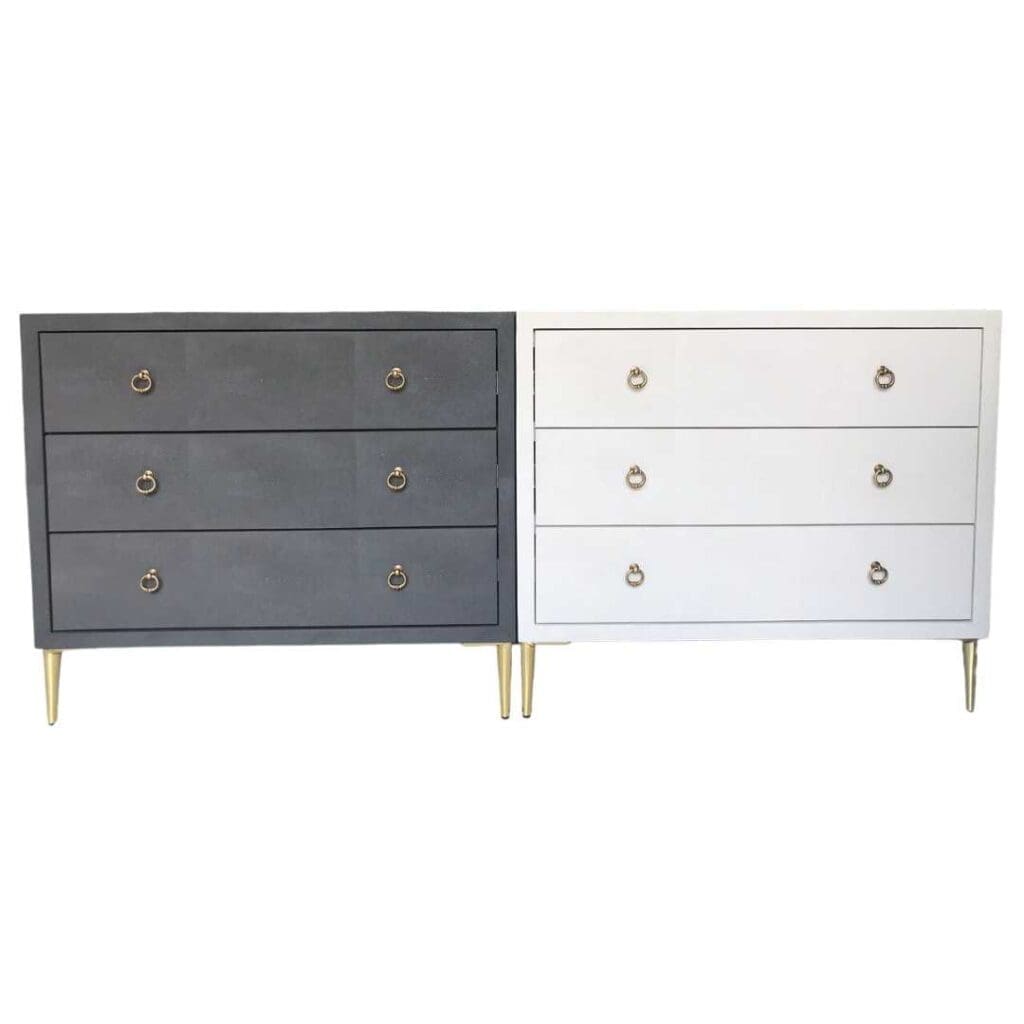
This faux shagreen technique allows people to have the Shagreen look without damaging the environment or using an endangered species.
How Shagreen Was Used Throughout History
Shagreen has been used for a variety of purposes throughout history. Here are some of the significant ways it has been used in the past and, in many cases, is still being used today:
- Sword Handles: Shagreen was used in the 17th century to cover sword handles, as it provided a good grip and was durable.
- Jewelry Boxes: Shagreen was used in the 18th century to make small cases for storing jewelry, as it was durable and had a unique texture.
- Furniture: Shagreen has been used to cover furniture, such as tables and chairs, since the 1920s.
- Scientific Instruments: Shagreen was used in the 18th century to make small cases for scientific instruments such as microscopes and telescopes.
- Shoes: Shagreen is still used in the fashion industry to make shoes.
- Bags: Shagreen is was used to make bags and other accessories.
- Cigarette Cases: Shagreen was used in the 1920s to make cigarette cases, as it was a durable material that could protect cigarettes.
- Desk Accessories: Due to their durability and unique texture, Shagreen has been used to make desk accessories, such as blotter pads and pen holders.
- Decorative Boxes: Shagreen has been used to make decorative boxes and containers, as it is a luxurious material that can add elegance and sophistication to any room.
- Watch Straps: Shagreen has been used to make watch straps, as it is a durable and water-resistant material that can withstand everyday wear and tear.
Shagreen is a unique type of leather used for centuries for various purposes. Its rough texture is created by removing the scales from the skin of certain types of sharks and rays.
Shagreen was popular in the 17th century in France and has been used for everything from sword handles to furniture to fashion accessories.
Today, many manufacturers, Mondoro included, use faux Shagreen, a synthetic material that looks and feels like real Shagreen.
If you want to see how Mondoro can help you manufacture Shagreen products or home decor products – we would love to talk to you to see how we can help you.
Find out more about how Mondoro can help you create, develop, and manufacture excellent home decor and furniture products – don’t hesitate to contact me, Anita. Check out my email by clicking here or become a part of our community and join our newsletter by clicking here.
Mondoro gives out a FREE Lookbook to anyone interested. You can receive a copy of our latest Lookbook by clicking here.
Listen to our Podcast called Global Trade Gal. You can find it on all major podcast platforms. Try out listening to one of our podcasts by clicking here.
Subscribe to our Mondoro Company Limited YouTube Channel with great videos and information by clicking here.
Frequently Asked Questions About Shagreen
Is genuine shagreen ethical?
Shagreen is controversial because it involves the use of animal skins. Some people consider it unethical to use animals for leather production, while others argue that it is a sustainable use of a natural resource; because of the controversy, Mondoro used faux shagreen that looks and feels like genuine shagreen in our manufacturing.
Is genuine shagreen expensive?
Yes, shagreen is typically quite expensive due to its rarity and the labor-intensive process required to produce it.
How is shagreen made?
Shagreen is made by tanning a shark’s skin or ray and then sanding the surface to create a distinctive texture.
Is shagreen waterproof?
Shagreen is naturally water-resistant due to tiny calcium carbonate nodules in the skin.
What is faux shagreen?
Faux shagreen is a synthetic material designed to mimic the look and texture of real shagreen.
Why is shagreen on the endangered species list?
Many sharks and rays used to make shagreen are now considered endangered due to overfishing and habitat destruction.
Why is protecting shagreen important?
Protecting shagreen is essential because it helps to preserve endangered species of sharks and rays and promotes sustainable use of marine resources.
Are there any alternatives to shagreen?
Yes, there are many alternatives to shagreen, including synthetic materials, other types of leather, and non-animal materials such as cork and bamboo.
What is being done to protect shagreen?
Governments and organizations worldwide are taking steps to protect endangered species of sharks and rays, such as implementing fishing quotas and creating protected marine areas. Consumers can also play a role by supporting sustainable and ethical shagreen products.
Related Content
What Is Shagreen? Manufacturing Faux Shagreen Home Decor Products
Shagreen is a rawhide that has small bumps on the skin’s surface. The shagreen hide was traditionally from shark and stingray skins. As sharks and stingrays are endangered species, we manufacture our shagreen with faux shagreen.
You can discover more by reading What Is Shagreen? Manufacturing Faux Shagreen Home Decor Products by clicking here.
What is the Ankole-Watusi Big-horned African Cow and How Is It Used in Home Decor Products?
The Ankole-Watusi big-horn African cow is a medium-sized cattle that have very longhorns. These cows are found mainly in Africa. The cow is not an endangered species, so cows are sold as meat, and the horns are also sold to make home decor and jewelry items. This ensures that every part of the cow is somehow used and nothing goes to waste.
You can discover more by reading our blog The Ankole-Watusi Big-horned African Cow and Home Decor Products by clicking here.
What Are The Agate Natural Agate Stone Beads Used For Home Decor Products?
Agate is a natural rock formation used as a decorative element for centuries. It can be found in many parts of the world, and agate stone has many different kinds and colors. In the Asia practice of Feng Shui, it can help us strike a balance in life and for good luck.
You can find out more by reading our blog Natural Agate Stone Beads For Home Decor Products by clicking here.

